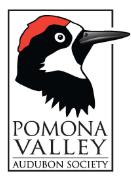Events
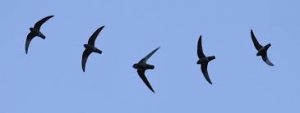
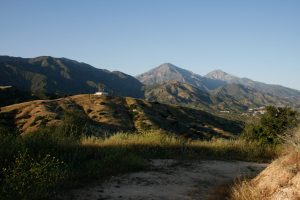
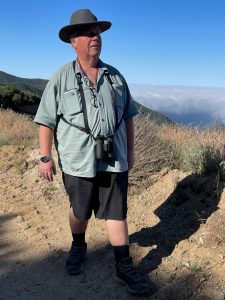
4031 N. Mills Ave. #1406, Claremont, CA 91711 Difficulty: Strenuous (one mile hike on fire road with steep grade, possible high heat)
Park at the south (TCT) lot: $9 for 4 hours non-residents, free for Claremont residents. Proceed north on Mills Ave to meet at the gate at 5:00 PM. Claremont is one of the only places to reliably see Black Swifts as they return from their aerial hunts to their roosts high in the remote San Gabriel Mountains. Tom Miko will lead us on the hike to the bluff overlooking Cobal Canyon to see the swifts as well as swallows and typical chaparral birds and wildlife. Be prepared with ample water, insect repellant, sunscreen and sturdy shoes. RSVP Tom Miko at tgmiko@gmail.com.
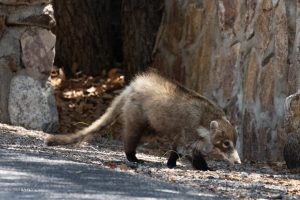
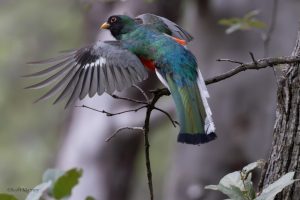
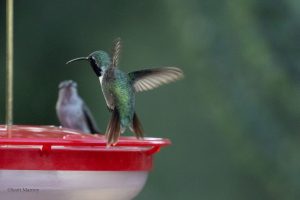

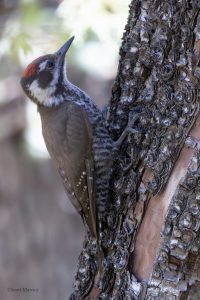
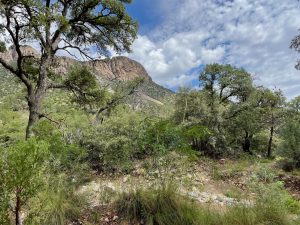
Difficulty: Moderate to strenuous with some hiking but lots of feeder watching as well.
The mountains of Southeast Arizona are a diversity hotspot where Mexican species reach their northern limits and the climate is moderated by the summer monsoons and higher altitudes. Possibilities include Arizona Woodpecker, Elegant Trogon, Painted Redstart, Lucifer Hummingbird, Common Black hawk and so much more. Myriad butterflies and other wildlife like coatis and javelinas can be seen. The trip will be based in Sierra Vista on 8/4 and 8/5 and then move to Green Valley for the nights of 8/6-8/8. An additional trip to Mount Lemmon for Red-faced Warbler and Olive Warbler is planned. Contact Dan Gregory (909) 456-4994 or DanRCRenee@verizon.net. for lodging and carpool suggestions.
The first community meeting of the new birding year will be Thursday September 4. Details on the full schedule of meetings and Fall 2025 fiend trips will be available soon.
News
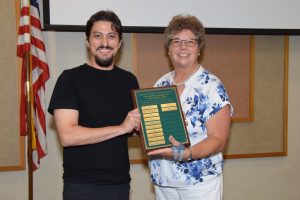 On June 5, 2025 at our annual June meeting and party we proudly presented the Dr. Henry E. Child’s Flock Leader Award to Michael Farivar for his commendable and outstanding service to our chapter.
On June 5, 2025 at our annual June meeting and party we proudly presented the Dr. Henry E. Child’s Flock Leader Award to Michael Farivar for his commendable and outstanding service to our chapter.
Michael is a dedicated volunteer, stepping up for virtually every kind of event where help is needed, with a special passion for community outreach. His communication skills make visitors to our booth/table feel welcome. He’s the person who arrives early, stays late, and is always ready to lend a hand—whether it’s setting up, breaking down, or capturing the moments in between with his camera. Michael’s talent behind the lens is much appreciated because he generously shares his excellent photos from outreach events and field trips. It’s likely you’ve seen them on the pages of our newsletter, as well as our social media platforms.
But his contributions don’t stop there. Michael is also a supportive presence on bird outings, assisting others as needed. He’s proven to be quite the handyman too. Earlier this year, he played a key role in restoring the water feature at the Dan Guthrie Bird Oasis on the Thompson Creek Trail. He visited the oasis, diagnosed the problem, sourced the parts, and gathered the tools needed. He returned to replace the pump, clean the water reservoir and reconnect the solar panel ensuring that water, once again, flows for the birds and other wildlife at the oasis.
His reliability, spirit of service, and the positive way he represents PVAS in the community did not go unnoticed by the board making it an easy and unanimous decision to honor him with this award.
Local sources for rehabilitation of injured and orphaned birds: Always call first to see if they take the type of bird you’ve found. And PLEASE do not drop off ill, injured or orphaned birds without contacting the rehab facility first!
FOR PERCHING BIRDS (Passerines – Doves, Sparrows, Finches, and Corvids – Crows and Jays etc.)
Please start with this link from the Pasadena Humane Society –
https://pasadenahumane.org/services/wildlife/finding-baby-wildlife
Scroll down to RESCUING BABY BIRDS, use the flow chart to determine if the bird needs rescuing. If you’re not sure if your bird is a fledgling or what species it is, scroll to HOW TO IDENTIFY A FLEDGLING.
Songbird Care and Education Center in Fountain Valley – Vicki Anderson (714) 222-6817 http://www.songbirdcareandeducation.org/home.html
Sunshine Haven Wildlife Rehabilitation in Riverside – Currently operating from a temporary location as their new facility is being built, they have limited intake from 11 am to 3 pm only.
https://sunshinehavenwildlife.com/
Pond Digger Ranch Wildlife Rehab in Cherry Valley – Leslie Triplett, 909-800-7676, (Operates under Bear Paw Ranch listed below) Corvids and Passerines https://www.ponddiggerranchwildliferehab.com/home
FOR RAPTORS/BIRDS OF PREY (Hawks, Falcons, Owls, etc.)
San Dimas Raptor Rescue in San Dimas – Contact volunteer manager Kristine Koh (626) 559-5732. Located at the San Dimas Canyon Nature Center, drop-offs are by appointment only. (Please do not leave an ill, injured or orphaned bird at the Nature Center.)
Bear Paw Ranch Wildlife Rehabilitation in Oak Glen – Kandie Cansler (909) 790-1010 and her cell is (909) 289-0166. For Transport/Triage for Injured Wildlife call: Marsha: 909-289-2845
https://www.facebook.com/groups/3916463995252519/announcements
FOR SHOREBIRDS, SEABIRDS & WATERFOWL (Pelicans, gulls, sandpipers, ducks, geese, etc.)
International Bird Rescue is the best source for sick or injured seabirds and waterfowl. Contact info is on their website: https://www.birdrescue.org/contact/found-a-bird/helping-a-debilitated-bird/
FOR A COMPLETE LIST OF CERTIFIED WILDLIFE REHAB FACILITIES IN CA
https://wildlife.ca.gov/Conservation/Laboratories/Wildlife-Health/Rehab/Facilities
The latest edition of the Chaparral Naturalist is now available PVAS-Spring2025-singlepages
You can contribute a story to the Chapparal Naturalist by checking out these Story Submission Guidelines and emailing the editor Sam Atwood
At her recent presentation to PVAS, Dr. Allison Shultz mentioned that her current research project focuses on understanding the effects of wild fires and smoke on birds. You can now read a full account of the work here
